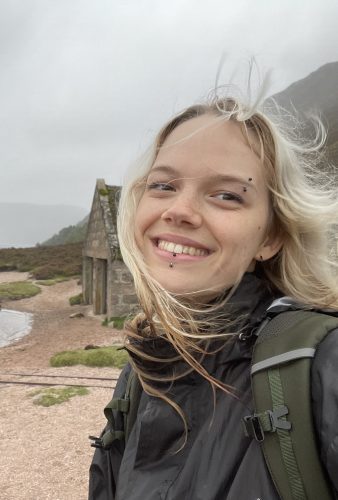- Academic title:
- PhD student
- Position:
- PhD student
- Supervisor:
- Tomasz Borowik

2024 – present : PhD project on water availability and large mammal space-use in temperate ecosystems, Mammal Research Insititute PAS, Białowieża, Poland
2021 – 2024 : MSc Forest and Nature Conservation (specialisation in ecology) at Wageningen University and Research, Wageningen, the Netherlands
2017 – 2021: BSc Applied Biology at HAS University of Applied Sciences (specialisation in ecology), ‘s-Hertogenbosch, the Netherlands
My interests are very broad, but my main passion lies in large mammal space-use and habitat selection and predator-prey interactions. During my studies I have conducted many research projects on various topics. For example, for my BSc internships I investigated the potential of the kiwi (Apteryx mantelli) as a pest control method in vineyards in New Zealand, and I studied sow-piglet and piglet-food interactions in a novel feeding system (family feeding matters). During the last year of my BSc, I started gaining more interest in predator-prey interactions, specifically regarding the return of wolves in large parts of Europe. For my MSc thesis, I conducted a project on the effect of the return of wolves on spatial activity patterns of ungulates in a national park (National park de Hoge Veluwe) in the Netherlands. Currently for my PhD, I am focusing on how water availability (focusing on water holes) affects space-use and movement of large mammals in the forest of Białowieża, using camera traps and telemetry data.
2023 - 2023: MSc research internship (5 months) at University of Glasgow in Glasgow, fieldwork in Aberdeenshire, Scotland
Project: ‘the effect of roe deer habitat use on tick numbers’
2019 - 2020: BSc research internship (6 months) at Massey University in Palmerston North, fieldwork in Northland, New Zealand
Project: ‘Native species in agriculture: the North Island brown kiwi as potential pest control in vineyards’